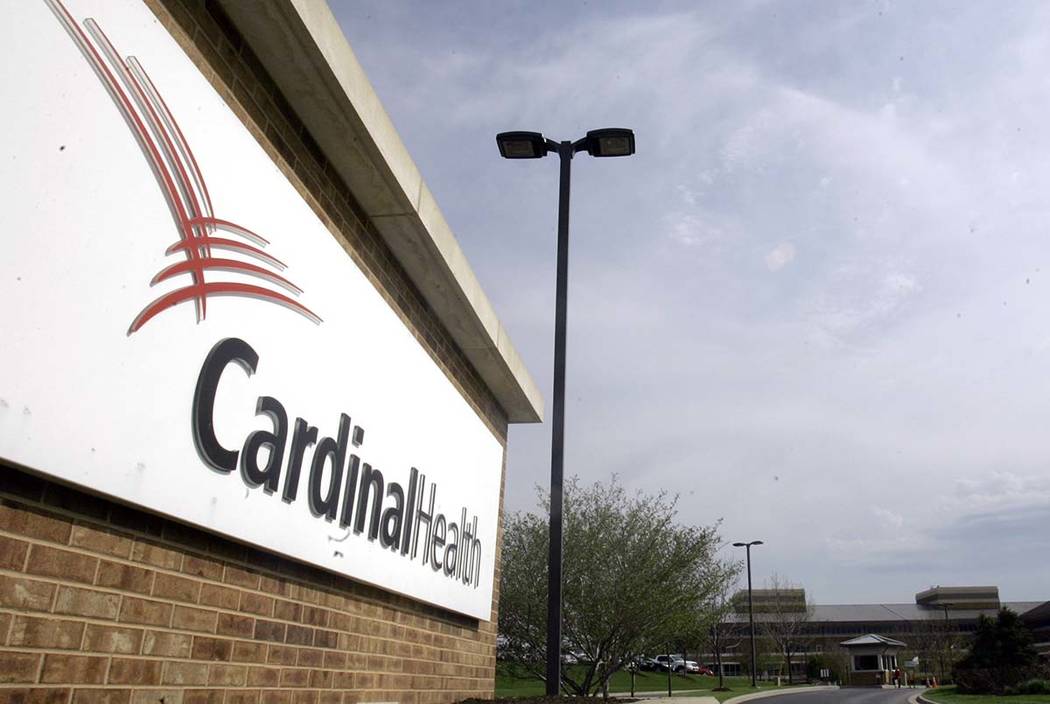As opioid crisis grew, drugmakers shipped stronger pills, report says
WASHINGTON — In 2012, as the death toll from the nation’s opioid crisis mounted, drug companies shipped out enough of the powerful and addictive painkillers for every man, woman and child in the U.S. to have nearly a 20-day supply.
In some counties, mostly in Appalachia, it was well over 100 days.
An Associated Press analysis of drug distribution data released as a result of lawsuits against the industry also found that the amount of opioids as measured by total potency continued to rise early this decade even as the number of pills distributed began to dip.
The reason: Doctors were prescribing — and the industry was supplying — stronger pills.
“It shows it wasn’t just the number of pills being shipped that increased. The actual amount of opioids being prescribed and consumed went up,” said Anna Lembke, a Stanford University professor who researches opioids and is serving as a paid expert witness for plaintiffs in the litigation.
“We know that the higher the dose of prescribed opioids, and the longer patients are on them, even for a legitimate pain condition, the more likely they are to get addicted.”
The AP found that the overall amount of opioid medication shipped to pharmacies, medical providers and hospitals increased 55% from 2006 through 2012. The number of pills rose significantly over that period, too — but that increase was lower, about 44%. (The amount of medication was calculated using a standard measure of potency known as a morphine milligram equivalent, or MME.)
Appalachian region affected
In 2006 and 2007, the counties at the very top of the list of those receiving the most opioids were scattered about the eastern half of the U.S. By 2012, they were all in the Appalachian region. And the numbers were up dramatically.
For instance, in 2006, Tennessee’s Hamblen County received the most opioid medication per person in the country — about 70 days’ worth of a typical prescription for every man, woman and child. By 2012, the top county was Norton, Virginia, and the number of days’ worth of opioids was a staggering 134.
In calculating days of medication, the AP used 50 MMEs as a daily dosage. That is the upper limit beyond which the Centers for Disease Control and Prevention urges doctors to use caution.
The data comes from the federal Drug Enforcement Administration’s collection of information from pharmaceutical companies about how controlled substances were distributed down to pharmacies, doctors and hospitals. It’s a key part of the case for some 2,000 state, local and tribal governments suing the industry over the opioid crisis.
First federal trial set for October
The first of the federal trials, involving claims from Ohio’s Cuyahoga and Summit counties, is scheduled to start in October.
Last week, a judge agreed to make public the data covering 2006 through 2012. During that period, opioid overdose-related deaths in the U.S. increased from about 18,000 a year to more than 23,000. Since then, the number has doubled, and opioids have overtaken automobile accidents as the top cause of accidental death in the country.
Heroin and even stronger illicit drugs such as fentanyl drove the increase for most of this decade. Studies have found that most new heroin users started with prescription drugs that had been prescribed to them or to someone else.
Plaintiffs in the lawsuits claim drugmakers overstated the benefits of opioids and downplayed their addictiveness, persuading doctors to offer the drugs to more patients and in higher amounts.
The origins of the opioid crisis are largely traced to the mid-1990s, when Purdue Pharma introduced OxyContin. Up until then, opioids were generally reserved for surgery or cancer patients in extreme pain.
Suits claim DEA policies violated
The government lawsuits also say the companies violated DEA policy by shipping orders even when they believed them to be “suspicious” because they were far larger than normal.
For example, an e-mail chain from Purdue Pharma, the maker of OxyContin, showed an employee flagging an order at 4:15 p.m. on Oct. 27, 2009, from drug distributor Cardinal Health because it was nearly twice as big as the customer’s usual 12-week order of a certain dosage. The order was worth close to $293,000.
It was approved at 4:16 p.m., the emails show.
The e-mail was part of a new trove of industry documents made public this week. They also include a transcript of a testy deposition earlier this year in which an executive at Cardinal Health — one of the nation’s largest drug distributors — said the company has no obligation to the public when it comes to the opioids it ships.
Cardinal Health counsel Jennifer Norris was asked by a lawyer whether the company wants to “ensure that it does what it can to prevent the public from harm?”
She answered: “I don’t know that Cardinal owes a duty to the public regarding that.”
She went on to say, “Cardinal Health has an obligation to perform its duties in accordance with the law, the statute, regulations and guidance.”
A Cardinal spokeswoman said the comment was made only in a legal context.

















